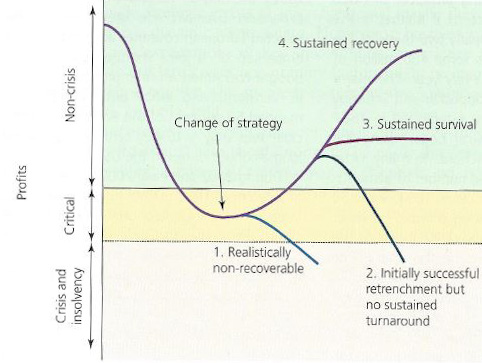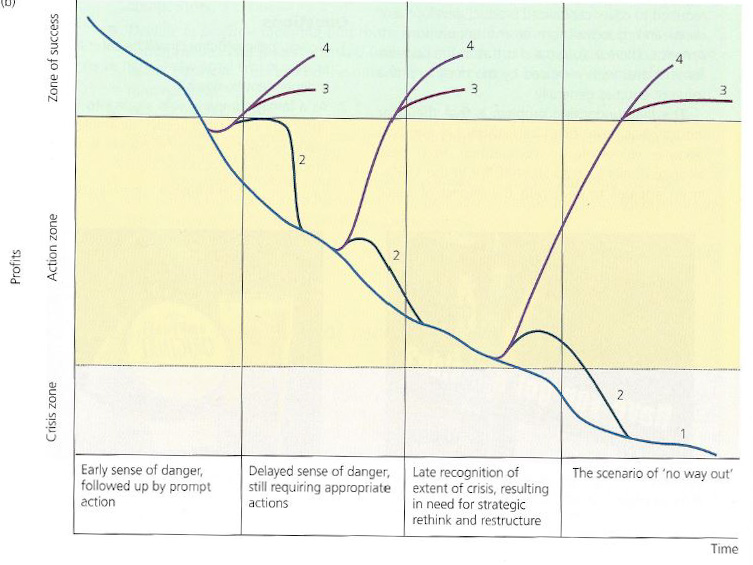
Elements of Feasibility of recovery:
Slatter (1984); Four types of recovery
- Realistically non-recoverable
- Initially successful retrenchment but not sustained turnaround
- Sustaines survival
- Sustained recovery
Principle:
In a crisis stage change is essential but might not be feasible due to industry competitive situation or alike.
Issues:
Weitzel & Johnson (1989); Decline in organisations, related to the Four types of recovery 1-4.
The later a recovery from downward trend, the more difficult

Slatter, 1984 – little chance of survival: – non competitive in cost (high cost country), lack of diversity or resources, decline in demand
Slatter, 1984 – main features of sustained recovery:
- assets reduction
- new strategic leader, restructure organisation, new strategies, new roles and policies
- better financial control systems
Retrenchment strategies: Organisational change (leadership), Financial change (cost and CF control), Cost reduction, Asset reduction, Revenue generation.
Turnaround strategies: Changing price, Refocusing (markets/products), Product development, Rationalizing product line, Selling and advertizing
Applications:
To determine recovery challenge
Source of Feasibility of recovery:
Slatter and Lovett (1999)






